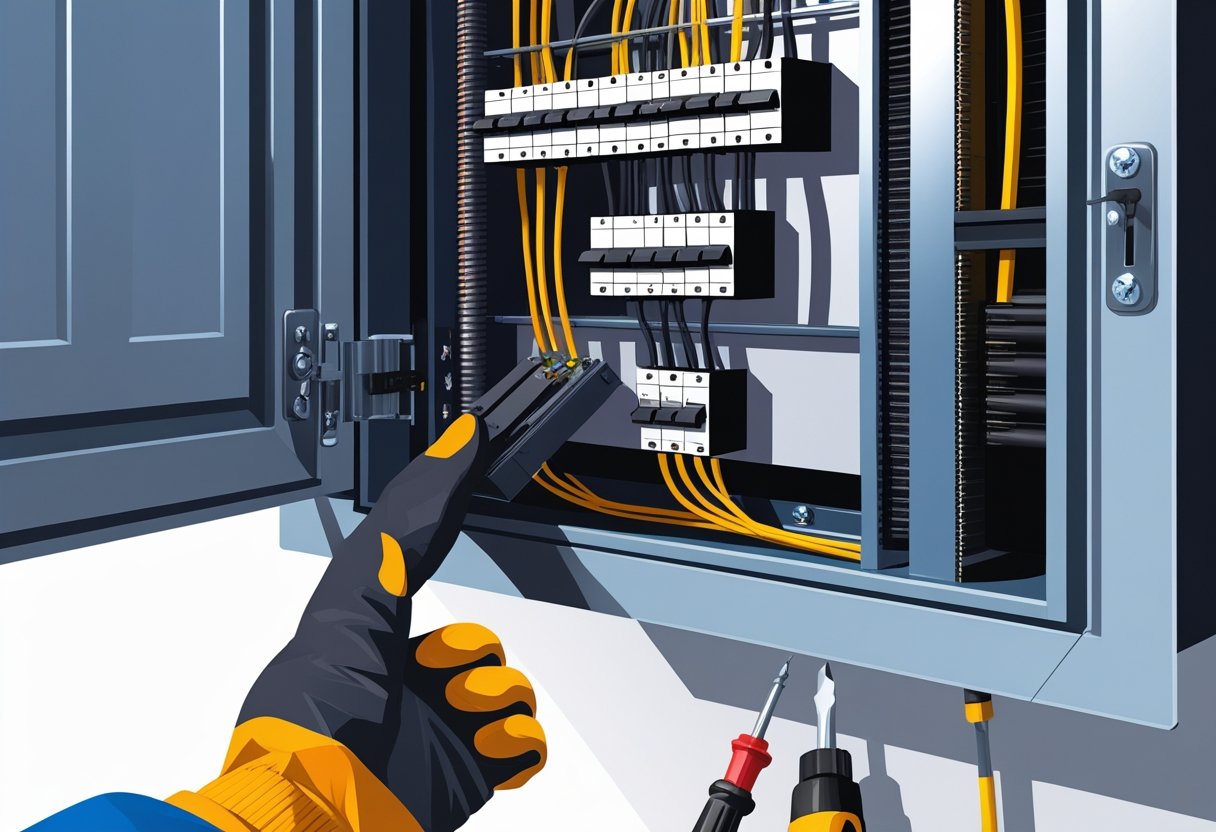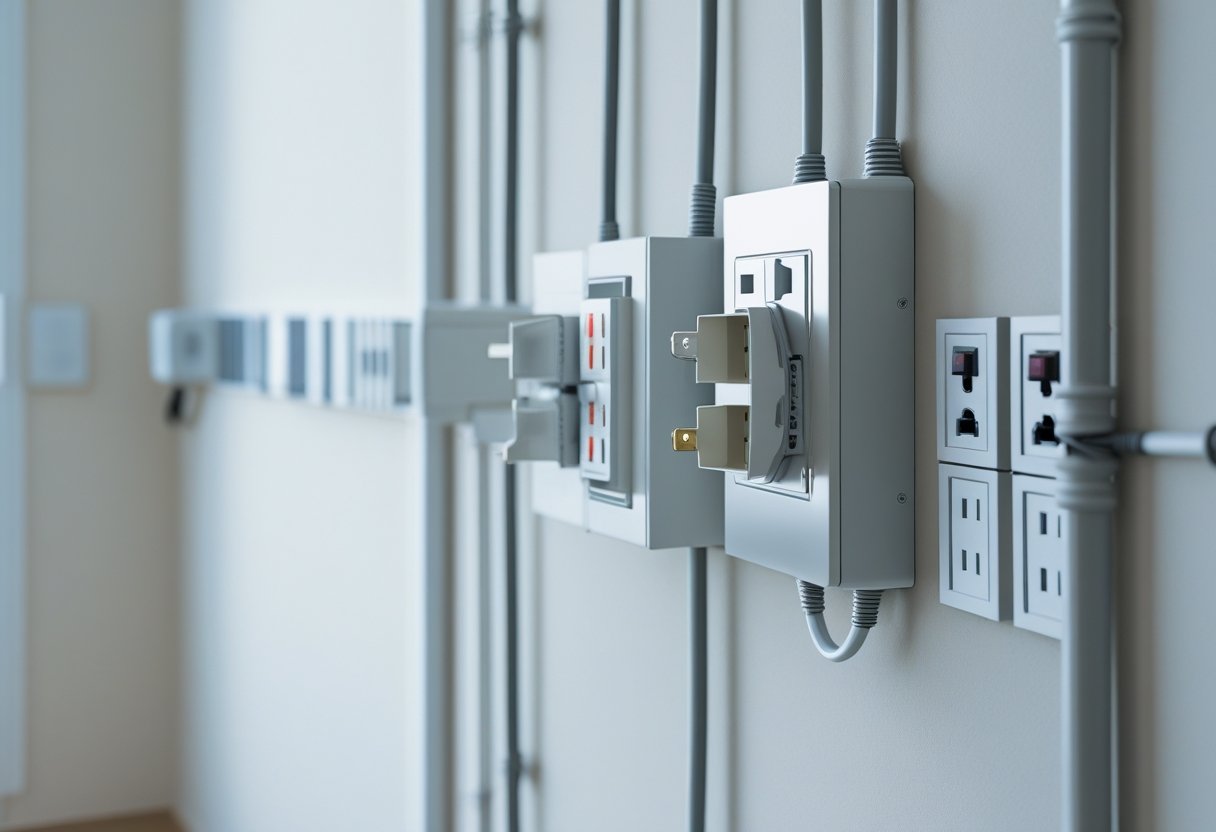Changing a circuit breaker may seem daunting if you've never done it before, but it’s a manageable task with the right guidance. To change a circuit breaker safely, you'll need to ensure the power is completely turned off and follow a few straightforward steps to remove the old breaker and install a new one. This process is not only essential for maintaining your home's electrical safety but can also save you money on professional repairs.
If you're experiencing issues like frequent tripping or buzzing sounds, it might be time for a circuit breaker replacement. At AAA Electrical Services, we emphasize a safety-first approach, ensuring that your family’s well-being is always at the forefront of any electrical work. With over 42 years of expertise in Sacramento and surrounding areas, our licensed technicians provide reliable service that you can trust.
Whether you're a DIY enthusiast or prefer to leave the job to professionals, understanding how to handle circuit breakers is crucial. This blog will guide you through the necessary steps to perform this task safely and effectively, ensuring that your home remains a secure environment.
Understanding Circuit Breakers and Electrical Safety
Circuit breakers are vital components in your electrical system. They not only protect against electrical overloads and short circuits but also enhance safety within your home. Understanding how they function and when they should be replaced is crucial for maintaining a secure environment.
How Circuit Breakers Work
A circuit breaker operates as an automatic switch, controlling electrical flow. When the current exceeds a certain limit, the breaker trips, cutting off power to prevent damage. This action helps avoid potential electrical fires caused by overloads. Your breaker panel houses these devices, with the main circuit breaker controlling power to the entire system.
When a fault occurs, the circuit breaker can quickly interrupt the flow of electricity, effectively safeguarding your appliances and wiring. It is essential to know how to identify signs of a faulty breaker, as this can indicate that replacement is necessary for continued safety and efficiency.
Common Reasons for Circuit Breaker Replacement
Circuit breakers can wear out over time due to various factors. Frequent tripping often signals that your breaker is outdated or that a fault exists in your electrical system. Exposure to moisture, age, or physical damage can also compromise their functionality.
If you notice constant flickering lights or burning smells near your breaker panel, these could be signs of imminent failure. Regular inspections are essential to catch issues early. For reliable help with such maintenance, consider turning to AAA Electrical Services, where your family's safety is always a priority.
Essential Electrical Safety Tips
Electrical safety should always be a top priority. Start by ensuring your breaker panel is easily accessible and not blocked by furniture or clutter. Familiarize yourself with which breakers control specific areas of your home.
Consider labeling circuits to simplify troubleshooting. Regularly check for any unusual sounds or smells coming from your electrical panel. If you suspect any issues, do not hesitate to contact a professional. AAA Electrical Services offers expert assistance to ensure your home remains safe and your circuits function properly. Always prioritize your family's safety when dealing with electrical systems.
Identifying Signs of a Faulty Circuit Breaker
Recognizing the signs of a faulty circuit breaker is essential for maintaining a safe electrical system in your home. Common indicators include unusual noises, flickering lights, and a breaker switch that won't reset. These issues could lead to more serious electrical problems and pose risks to your safety.
Flickering Lights and Buzzing Sounds
If you notice flickering lights, this can signal an underlying problem with your circuit breaker. It may indicate an overloaded circuit or a faulty connection. The lights may flicker intermittently or display inconsistent brightness.
In addition to flickering, a buzzing sound around the circuit breaker can also be a sign of trouble. This might be due to loose connections or an internal malfunction. If you hear a persistent buzzing noise, it's crucial to take action. These issues should not be ignored, as they can lead to overheating and increase the risk of electrical fires.
For a thorough inspection, consider contacting AAA Electrical Services. They are equipped to handle any electrical issue safely and efficiently.
Breaker Switch Not Resetting
A circuit breaker that will not reset is a clear sign of a potential fault. When you try to reset the breaker and it immediately trips again, the breaker may be recognizing a serious issue like a short circuit or overload. It's designed to trip for your safety, indicating that something is wrong with the circuit.
You could be dealing with multiple devices drawing too much power or a fault in the wiring itself. Pay attention to any devices that might be on that circuit. You may need to limit the load before trying to reset the breaker again. Professional help from AAA Electrical Services can provide you with the expertise needed to troubleshoot and resolve the issue effectively.
Evidence of Electrical Damage
Signs of electrical damage can sometimes be more visible. Look for any burn marks, melted wires, or a burnt smell near the circuit breaker panel. Such signs indicate overheating or electrical failure, posing serious safety risks. If you spot any damage, it’s vital to act quickly.
A faulty circuit breaker might not only damage itself but also affect your home's wiring. Regular inspections can help catch these problems early. Contacting a professional service to address any visible damage ensures the safety of your home and family. Trust AAA Electrical Services for expert assessments and necessary repairs in your area.
Keeping your electrical system in check will help maintain a safe and functional home environment.
Preparing to Replace a Circuit Breaker
This section highlights the essential steps needed to prepare for replacing a circuit breaker. Focus on gathering tools and materials, ensuring safety by turning off the main breaker, and verifying that electrical power is off before proceeding.
Gathering Tools and Materials
Before you start, gather the necessary tools to ensure a smooth process. You will need:
- Screwdriver Set: Both flathead and Phillips screwdrivers are essential for removing the breaker panel cover and loosening screws.
- Voltage Tester: A reliable voltage tester helps you confirm that the power is off before you start working on the circuit breaker.
- Replacement Breaker: Ensure you have the correct amperage rating to match your existing breaker. This information can typically be found on the old breaker itself.
- Wire Cutters/Strippers: These tools assist in managing any wires you may need to disconnect.
- Safety Gear: Wear insulated gloves and safety goggles to protect against electrical shock.
Keep these tools organized and within reach as you prepare to replace the circuit breaker. A well-prepared workspace enhances safety and efficiency.
Turning Off the Main Breaker Safely
Turning off the main breaker is a critical step in ensuring your safety. To do this:
- Locate the Main Breaker: This should be in your breaker panel or breaker box. It usually sits at the top or bottom of the panel.
- Switch Off the Main Breaker: Firmly flip the switch to the "off" position. This cuts power to the entire home, reducing the risk of electrical shock.
- Lock or Tag the Breaker: If possible, use an appropriate lockout device or tag to indicate that work is in progress. This prevents anyone from accidentally turning it back on.
Taking these steps safeguards you while you work on the breaker. Your safety is paramount in any electrical DIY project.
Verifying Electrical Power Is Off
After turning off the main breaker, it's vital to confirm that electrical power is indeed off. This is where your voltage tester comes into play.
- Test the Circuit: Insert the voltage tester into the socket of the circuit you're working on or directly contact the breaker terminals.
- Check Indicator Lights: If the tester lights up, power is still present, and you must ensure that the main breaker is fully switched off.
- Double-Check Multiple Circuits: If you’re unsure, test other circuits nearby as well.
This verification step is crucial to avoid the risk of electrical shock while replacing the circuit breaker. Your diligence ensures a safe working environment as you proceed with your project.
For assistance with electrical issues, consider reaching out to AAA Electrical Services, where tailored electrical solutions prioritize your family's safety.
Step-by-Step Circuit Breaker Replacement Guide
Replacing a circuit breaker is a straightforward process if you follow the right steps. This guide will walk you through removing the faulty breaker, installing the new one, and safely reconnecting power.
Removing the Faulty Breaker
Before working on your breaker panel, ensure your safety by turning off the main breaker that controls the panel. This will prevent any electrical shock during the replacement.
Start by removing the metal faceplate of the breaker panel. Use a screwdriver to loosen the screws and carefully set the plate aside. Next, identify the faulty circuit breaker you want to replace.
Unscrew the screws that hold the breaker in place, then gently pull it out of the panel. Check for any signs of damage or burning, as this indicates issues with the breaker or the electrical circuit itself. If you notice an overloaded circuit, it's best to consult a professional. For residents in Sacramento, AAA Electrical Services can assist with this assessment to ensure safety.
Installing the New Circuit Breaker
Once the faulty breaker is removed, you're ready to install the new one. Prior to installation, ensure the replacement circuit breaker matches the amperage rating of the old one.
Align the new circuit breaker with the slot in the panel. Push it firmly into place until you hear a click, indicating it’s secured. After that, fasten it with screws, ensuring it fits snugly against the panel.
Be sure to double-check connections to prevent issues later. If you're unsure, AAA Electrical Services has licensed professionals ready to help with installations in your area. They prioritize tailored electrical work designed with your family’s safety in mind.
Reconnecting Power and Testing
Before reconnecting power, verify that everything is installed correctly. Once confirmed, return to your main breaker and flip it back on.
After restoring power, test the new circuit breaker by switching it on. Ensure the attached electrical devices are functioning properly. If any issues arise, it may indicate problems in the electrical circuit that require professional attention.
Remember, a properly functioning breaker ensures your home remains safe and power interruptions are minimized. For prompt and trustworthy service, consider reaching out to AAA Electrical Services, available for same-day assistance in multiple Sacramento areas.
When to Call a Professional Electrician
Certain electrical issues should be handled by a licensed electrician. Recognizing when to seek professional help is crucial for your safety and the integrity of your home.
Potential Risks of DIY Electrical Work
Working with electricity carries risks. Even experienced individuals may overlook critical safety protocols, leading to shock hazards or fire risks. Mistakes can result in significant damage to your home's electrical system and could violate the National Electrical Code, leading to potential fines.
If you're unsure about the repairs needed, consider the consequences. Issues like flickering lights or frequent circuit breaker trips might seem minor but can signify deeper problems. You could expose yourself to unsafe wiring conditions. If you're uncomfortable dealing with electrical components, it's safer to call a professional electrician.
Situations Requiring a Licensed Electrician
Some situations necessitate the expertise of a licensed electrician. If your circuit breaker frequently trips and troubleshooting doesn’t resolve the issue, professional assessment is required. You might also need help if you plan to upgrade your electrical panel or install complex systems like EV chargers or solar panels.
Only a professional can ensure compliance with electrical codes. This is critical for maintaining home safety and functionality. AAA Electrical Services offers tailored solutions for all your electrical needs in the Sacramento area. When you need reliable service, it’s best to rely on trained professionals who prioritize your family's safety.
Frequently Asked Questions
Replacing a circuit breaker involves several considerations, including safety measures and specific steps for different scenarios. Below are common questions and their answers to help guide you through the process.
Can I replace a circuit breaker on my own?
Yes, you can replace a circuit breaker on your own if you have the right tools and knowledge. It’s important to follow safety protocols, such as turning off all power to the panel. If you are unsure, consider contacting a professional like AAA Electrical Services for assistance.
What are the steps to replace a circuit breaker that does not have a main breaker?
To replace a circuit breaker without a main breaker, first, turn off all branch circuits. Then, remove the panel cover and locate the faulty breaker. Detach the wires from the old breaker, install the new breaker, and reconnect the wires. Finally, secure the panel cover and turn the power back on.
Is it possible to change a circuit breaker from 15 amp to 20 amp, and how?
Changing from a 15 amp to a 20 amp breaker is possible but requires ensuring that the wiring can handle the increased load. You will need to replace the breaker and verify that all connected devices can safely operate at 20 amps. If you're unsure, consult with AAA Electrical Services.
How does one safely replace a breaker without shutting off power?
Replacing a breaker without shutting off power is highly unsafe and not recommended. Doing so increases the risk of electric shock, injury, or fire. Always prioritize safety by turning off all relevant power before starting any electrical work.
What is the typical cost for an electrician to replace a circuit breaker?
The cost for an electrician to replace a circuit breaker typically ranges from $100 to $200, depending on the complexity of the job and labor rates in your area. AAA Electrical Services offers flat-rate pricing, ensuring no surprises when it comes to costs.
How to replace a circuit breaker that has a test button?
To replace a circuit breaker with a test button, start by identifying the breaker and turning off the power. Remove the panel cover and loosen the screws holding the wires on the breaker. After replacing the breaker, ensure the test button functions correctly by pressing it once the power is restored.





